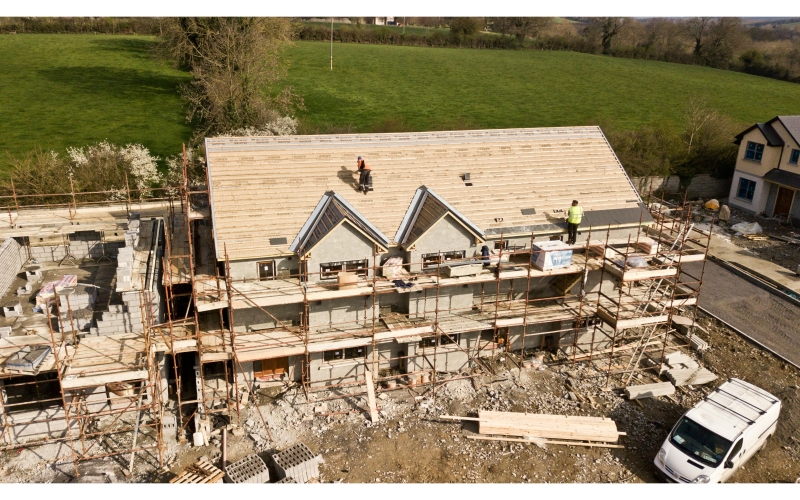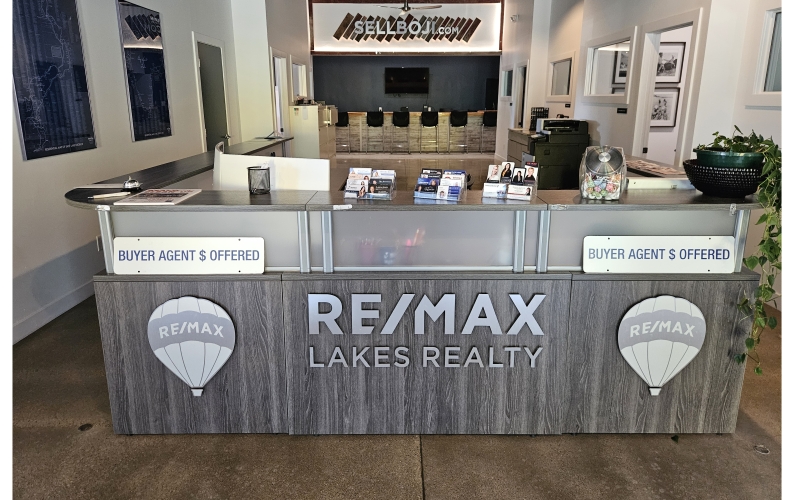How Rent-to-Own Works: Process & Key Details

Owning a home is a dream for many people, but not everyone can make that jump right away. Some have trouble saving enough for a down payment. Others need more time to fix their credit or show a steady work history before they can qualify for a loan. Because of this, many people start looking for other ways to become homeowners without having to buy a house immediately.
One option that often pops up is called “rent-to-own.” You might have heard the term before, but not everyone knows exactly what it means. On the surface, it sounds simple: you rent a house now and then buy it later. But like most things in real estate, it’s not always that straightforward. There are special contracts, extra payments, and rules you need to know before you sign anything.
Rent-to-own has become popular in areas where buying a home outright feels out of reach. It’s often seen as a bridge between renting and owning, giving people time to save money and improve their credit while still living in the home they might one day buy. But there’s also a lot of confusion about how it works, what you’re actually paying for, and what risks you might face if things don’t go as planned.
What is Rent-to-Own?
Rent-to-own is a type of housing agreement that mixes renting and buying. Instead of renting a house for a short time and then moving out, you rent it with the plan to buy it later. Think of it as a “test drive” for a home. You live in it like a renter, but you’re also working toward becoming the owner.
In a normal rental, you pay rent each month to live in the home, and that money is gone once you pay it. In a rent-to-own deal, your monthly payment often does two things: it covers your rent and sometimes also builds up credit toward the future purchase of the house. This credit can be applied to your down payment or reduce the total cost when it’s time to buy.
Most rent-to-own deals also include something called an “option fee” or “option money.” This is an upfront payment you give the seller to lock in your right to buy the home later. It’s usually a small percentage of the home’s price. If you buy the home at the end of the lease, that option fee can go toward your down payment. If you choose not to buy, you usually lose that fee.
Rent-to-own is attractive to people who aren’t ready to buy right away but don’t want to keep renting forever. It gives you time to improve your credit, save for a larger down payment, or simply decide if the home and neighborhood are a good fit. But it’s not risk-free — the contract matters a lot, and missing payments or breaking the deal can cost you money and your chance to buy.
How Do You Rent-to-Own?
Rent-to-own can sound complicated, but when you break it down, it’s a series of steps. Each step helps you move from being a renter to being a future homeowner. Here’s how it usually works:
1. Finding a Rent-to-Own Home
Not every house on the market is available as rent-to-own. Some sellers offer it as a way to attract buyers, especially if the home has been sitting on the market for a while. You can find these homes through real estate agents, special listing sites, or by talking directly to owners who are open to flexible arrangements.
2. Negotiating the Terms
Once you find a house you like, you and the seller agree on the terms of the deal. This includes the length of the rental period, the monthly rent, how much of that rent (if any) goes toward the purchase price, and the price of the home when you buy it. This price is usually locked in when you sign the agreement, which can be helpful if property values rise during your rental period.
3. Paying the Option Fee
Most rent-to-own agreements require an upfront payment called an “option fee” or “option money.” This fee gives you the right — but not the obligation — to buy the house at the end of the lease. It’s often between 1% and 5% of the home’s price. If you buy, it usually applies to your down payment. If you walk away, you typically lose the fee.
4. Living in the Home
During the lease period, you live in the house just like a renter. You pay rent every month and follow the rules in the agreement. Depending on your contract, you may also be responsible for certain maintenance or repairs that a normal renter wouldn’t handle.
5. Improving Your Financial Situation
This rental period is your chance to prepare for homeownership. Many people use this time to improve their credit, save more money, or pay down other debts. Doing this makes it easier to qualify for a mortgage when it’s time to buy.
6. Deciding at the End of the Lease
When your lease ends, you can either buy the home at the agreed price or decide not to. If you choose to buy, you’ll apply for a mortgage or pay cash, using any credits and your option fee to lower the cost. If you decide not to buy, you usually lose the option fee and any rent credits you’ve built up.
Example of a Rent-to-Own
Say you found a home you really like listed for $200,000. You’re not ready to buy it today, but the seller agrees to a three-year rent-to-own deal. Here’s how it could look:
- Purchase Price: $200,000 (locked in today).
- Option Fee: 3% of the purchase price, or $6,000. This is paid upfront and will go toward your down payment if you buy the home later.
- Monthly Rent: $1,500. Out of that, $300 each month is counted as “rent credit” toward the purchase.
- Length of Lease: 3 years.
Over three years, your rent credit adds up to $10,800 ($300 × 36 months). If you buy the house at the end of the lease, you’ll already have the $6,000 option fee plus $10,800 in rent credits to apply to the purchase — that’s $16,800 you don’t have to come up with at closing.
At the end of three years, if you’ve improved your credit and saved enough, you can get a mortgage for the rest of the purchase price. But if you decide not to buy, you usually lose both the option fee and the rent credits.
Types of Rent-to-Own Contracts
1. Lease-Option Agreement
This is the more flexible version of rent-to-own. You rent the home for a set period — usually one to three years — and at the end you have the option (but not the obligation) to buy it. If you choose to buy, you use your option fee and any rent credits you’ve built up toward the purchase price. If you decide not to buy, you can walk away, though you typically lose your option fee and credits. This type of contract works well if you’re not completely sure you want the home or if you’re still improving your finances.
2. Lease-Purchase Agreement
This contract is more binding. You rent the home now, but you’re agreeing upfront that you will buy the home at the end of the lease. You lock in the purchase price at the beginning, and when the lease ends, you’re expected to complete the purchase, usually with a mortgage. If you can’t follow through — for example, if you can’t get financing — you may lose your option fee, rent credits, and possibly face legal trouble. This version is better for people who are sure about the home and confident they’ll qualify for a loan later.
Key Differences Between the Two
- Flexibility: Lease-option gives you a choice; lease-purchase commits you to buy.
- Risk: Lease-option is safer if your plans change. Lease-purchase is riskier but can be a good fit if you’re confident in your finances.
- Seller Preference: Sellers may prefer lease-purchase because it locks in a buyer, but buyers often prefer lease-option because it gives them flexibility.
Maintenance Responsibilities
Unlike a normal rental, many rent-to-own agreements make the tenant responsible for some or all maintenance and repairs. This could mean fixing appliances, handling landscaping, or even paying property taxes. Always check your contract to see what’s expected of you.
Default or Breach of Contract
This means breaking the rules of the agreement — for example, by missing payments or damaging the property. Defaulting could mean losing your option fee, rent credits, or even being removed from the property.
How Long Rent-to-Own Contracts Typically Last
Most rent-to-own contracts last one to three years, though some can run as long as five years or more. The length depends on what you and the seller agree on. A shorter term may mean less time to save or improve your credit, while a longer term gives you more time but could include higher costs. Always choose a contract length that fits your financial goals and timeline.
Avoid Getting Scammed
Because rent-to-own deals are less common and more complex than normal rentals, they can attract scammers. People may promise you an easy path to owning a home but actually be setting you up to lose money. Knowing the warning signs and taking simple precautions can protect you.
1. Check the Ownership of the Property
Before signing anything or paying money, make sure the person offering the rent-to-own deal really owns the home. Ask for proof of ownership or check public records. Scammers sometimes rent out homes they don’t own.
2. Be Wary of High Upfront Fees
An option fee is normal, but if the amount seems unusually large or the seller pressures you to pay immediately, that’s a red flag. Compare the fee to the home’s price — it’s usually between 1% and 5%.
3. Get Everything in Writing
Verbal promises mean nothing in real estate. Make sure all terms — purchase price, rent credits, repairs, and deadlines — are clearly written in the contract. Don’t sign anything you don’t understand.
4. Have a Professional Review the Contract
Hire a real estate lawyer or trusted advisor to read the agreement before you sign. They can spot unfair terms or missing protections. This small cost can save you thousands later.
5. Inspect the Home Before Moving In
Just because you’re renting first doesn’t mean you should skip the home inspection. An inspection will uncover hidden problems like foundation issues or old wiring, which could become your responsibility.
6. Don’t Rush the Process
Scammers often pressure people to make fast decisions. Take your time, do your homework, and walk away if something feels off.
Can You Get Evicted in a Rent-to-Own Contract?
Yes, you can be evicted in a rent-to-own agreement, just like a regular rental, if you break the rules. Missing rent payments, damaging the property, or violating contract terms can all lead to eviction. However, as a rent-to-own tenant, you also risk losing your option fee and any rent credits you’ve built up. To protect yourself, always pay on time, follow the contract, and communicate with the seller if problems arise.
Recent Blog

What Does Under Contract Mean in Real Estate?
"Under contract" indicates a home has an accepted offer but isn’t sold until all conditions are met.
Read MoreWhat Does Under Contract Mean in Real Estate?
Different Types of Houses and Which One is For You?
There are a lot of types of houses that exist today, but only one would suit you the most!
Read MoreDifferent Types of Houses and Which One is For You?
What is an HOA? Understanding Homeowners Associations
Who decides what’s allowed and what isn’t? And what exactly are you paying for?
Read MoreWhat is an HOA? Understanding Homeowners Associations
How Long Does It Take to Build a House
Building a house typically takes 6 to 12 months, depending on size, design, permits, weather, and construction type.
Read MoreHow Long Does It Take to Build a House
What Is Earnest Money? A Simple Guide for First-Time Homebuyers
Earnest money is a deposit you make after your offer on a home is accepted. It shows the seller that you’re serious about buying.
Read MoreWhat Is Earnest Money? A Simple Guide for First-Time Homebuyers
How Can I See Old Listing Photos of a House
Use the site: operator on Google or Google Street View to find old listing photos of a house easily and quickly.
Read MoreHow Can I See Old Listing Photos of a House
What Does a Commercial Property Buyer’s Agent Do? (And Why You Need One)
When you work with a commercial property buyer’s agent, you’re not just hiring someone to open doors. You’re getting a full-time guide through every step of the buying process.
Read MoreWhat Does a Commercial Property Buyer’s Agent Do? (And Why You Need One)
The Tools You Need as a Real Estate Agent
With all the tools we have today, it is almost impossible to have a reason to quit early. We have it easier today than it was 10 or 20 years ago
Read MoreThe Tools You Need as a Real Estate Agent
Real Estate Marketing for Agents: The Modern Playbook to Get More Clients
Marketing helps agents stand out in a competitive market. Use both online and offline strategies to grow your reach. Tools like social media, SEO, and video help you build trust. Platforms like Zillow and Realtor.com let you show up in local searches. The goal is simple: stay visible, stay consistent, stay helpful
Read MoreReal Estate Marketing for Agents: The Modern Playbook to Get More Clients
8 Common Mistakes Home Buyers Make
These common mistakes often cause buyers to incur more costs than expected. Make sure you understand what these are.
Read More8 Common Mistakes Home Buyers Make
What Does 'Contingent' Mean in Real Estate?
In real estate, the word “contingent” means that a seller has accepted an offer on the home—but the sale isn’t final yet.
Read MoreWhat Does 'Contingent' Mean in Real Estate?
Why Should Home Sellers Offer Buyer Broker Compensation?
Paying buyer broker compensation can boost interest, reduce buyer costs, and lead to faster, smoother home sales, giving sellers a real market edge.
Read MoreWhy Should Home Sellers Offer Buyer Broker Compensation?